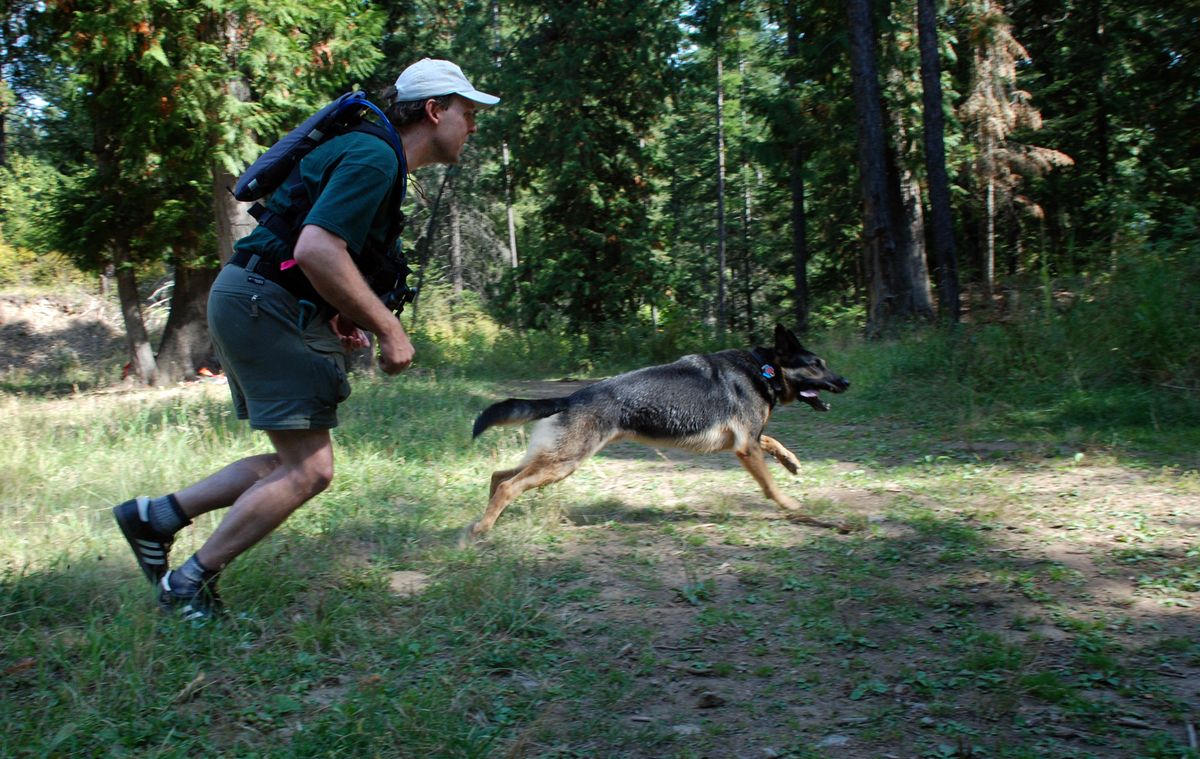Answering the call
Volunteers are the arms, legs and nose of search-and-rescue operations

It takes all kinds to form an effective safety net for people who venture outdoors. The people coming to your aid in a search-and-rescue situation are likely to be volunteers with a passion for activities as diverse as ATVing and hiking, snowmobiling and mountain climbing, river rafting and Ham radios, horse riding and flying private planes.
“Priest Lake Search and Rescue is 100 percent volunteer; I’m volunteer, too,” said coordinator Mike Nielsen.
The same can be said for most rural counties, and even Chris Barnes, Spokane County Department of Emergency Services coordinator, said, “To be quite honest, the search-and-rescue effort in Spokane County involves about 400 people and it’s about 99 percent volunteers.”
An early September Spokane County search for a missing ATV rider involved more than 100 volunteers from 14 search and rescue groups including three dog teams, equestrians, three ATV groups, one snowmobile group, Explorer SAR, and Spokane Mountaineers. The 21-year-old victim was found by a family member shortly after the four-day search was called off. The victim died later in the hospital.
Most search efforts have better endings, and that, volunteers say, keeps them motivated.
A three-day canine rescue training seminar at Camp Reed in September was a glimpse into just one niche of a network that’s ready, willing and able to save your life.
About 90 private dog owners from five states and British Columbia drove their own vehicles and paid the $85 fee to gather with expert trainers. This was just one of many steps in the two- to three-years journey to certifying a dog for search and rescue.
Despite the interest, Intermountain Search Dogs has only a handful of dogs that are mission ready.
At least a dozen breeds or mixed breeds were on hand, although German shepherds, hunting retrievers such as Labs and goldens, and trailing dogs such as bloodhounds were in the majority.
Jenn Gray was wearing the Inland Empire Bloodhounds club T-shirt, which claims, “Our dogs smell great.” Her dog is a training to be a tracking specialist. Some dogs specialize in air scenting and avalanche rescue.
“Breed isn’t so important, but the dog has to be able to stay focused,” said Cindy Green of Spokane, who was working with her black Lab, Sara.
“Why are there so many women?” she said, repeating the question. “Maybe they tend to have more patience with the intricacies of training dogs for search and rescue.”
Alida King has trained her German shepherd, Sadie, to specialize in finding human remains. “Some people call them cadaver dogs,” she said. “I’ve had three finds in six years.
“It sounds grim, but by the time they call me in, the families are prepared, and it offers them closure. In one case, the person had been missing for eight weeks; one was 16 hours, the other was 21/2 years.”
In a seminar on motivation for scenting dogs, instructor Terry Crooks of Libby said he strives for keeping his dogs “a little on the wild side…on the edge of control.”
“I don’t want my dog thinking he’s just going out to hang around with me. When one of these dogs hits the ground it should be ready to go — a child’s life may be at stake.”
Regarding training rewards, he said he never uses food for incentive.
“If your dog’s so excited it’s not hungry, you lose your reward system. If your dog finds a food stash on a search, you’ve lost focus.
“Wolves don’t hunt because they’re hungry. It’s what they do. It’s because they’re extreme hunters. They love it. I want my dog to love search and rescue.
“I use a toy,” he said. “And the dog doesn’t get the toy until it finds the person and comes back and takes me to the victim.”
From seminar to seminar, participants were introducing their dogs to rappelling off cliffs, riding in helicopters, maintaining focus in training progressions and much more.
“Have water bottles in your fanny pack, one instructor emphasized. “Add bullion or something to the water to make reluctant dogs drink. It’s an old musher trick for keeping sled dogs hydrated.”
The canine groups are called at least a dozen times a year for searches in Spokane County, and it’s not uncommon for them to be called to other counties.
“Some people join search and rescue because they want to put their snowmobiles to good use, and that’s the way we feel about our dogs,” said Phoebe Duke, a dog handler and longtime Mount Spokane ski patroller.
“People get involved in search and rescue because they’re hearts are into it,” said Mike Robinson, Ferry County SAR president. “There’s a commitment of time and a financial one, too, since we’re not even reimbursed for travel in most cases.
“It’s all without a lot of tangible gratification. Sometimes you don’t even meet the person you’ve spent 16 hours in the woods looking for. But it only takes one occasion when you make a difference to make it all worthwhile.”
The Ferry County group has a core of backcountry specialists who have assisted in numerous missions in recent years, most notably saving a hunter and a group of snowshoers. In both cases the subjects where in serious danger of succumbing to hypothermia.
“Any time you successfully find somebody who’s in dire straits, that’s all the gratification you could ever want,” Robinson said.